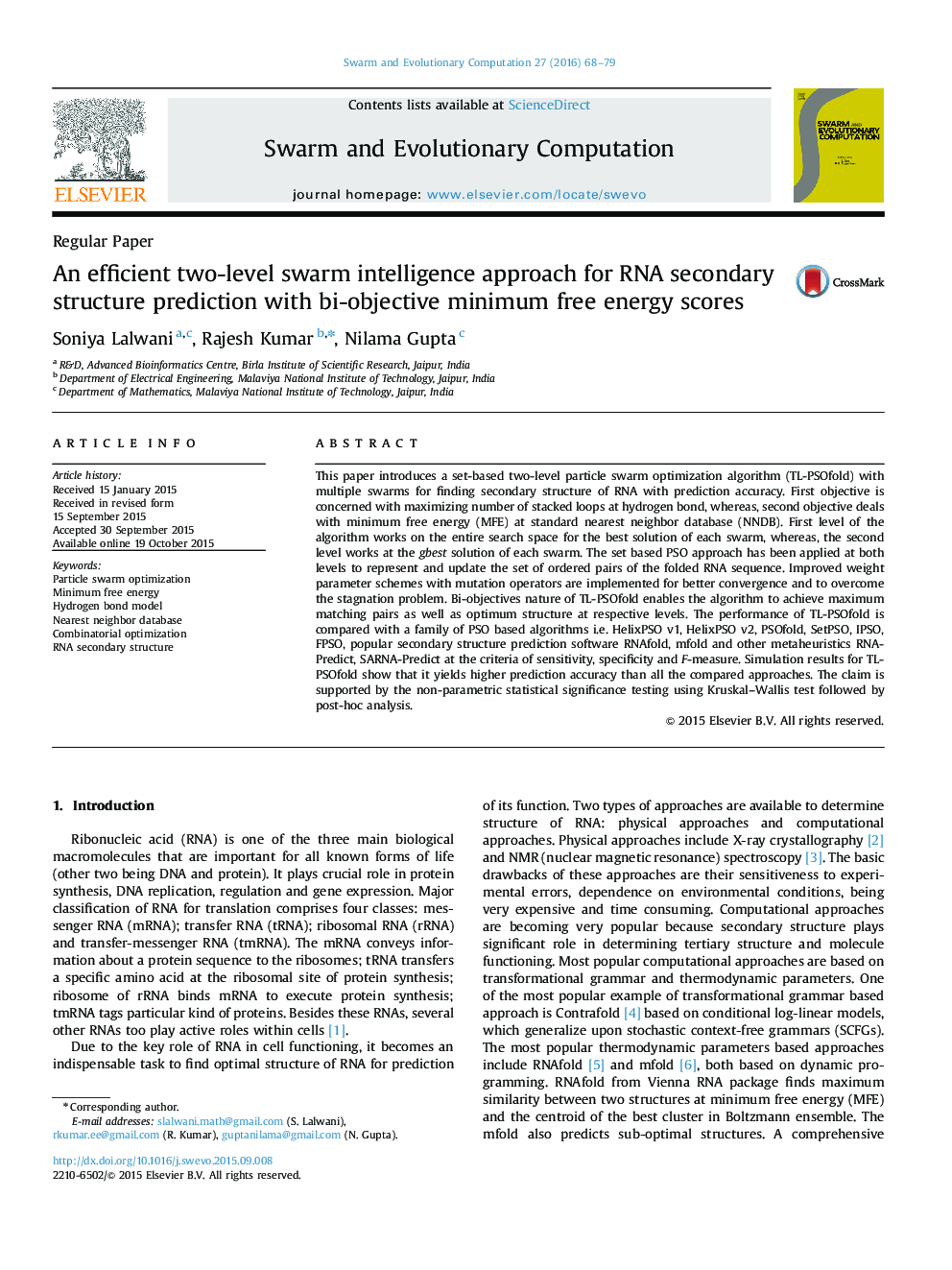| کد مقاله | کد نشریه | سال انتشار | مقاله انگلیسی | نسخه تمام متن |
|---|---|---|---|---|
| 494000 | 723189 | 2016 | 12 صفحه PDF | دانلود رایگان |
This paper introduces a set-based two-level particle swarm optimization algorithm (TL-PSOfold) with multiple swarms for finding secondary structure of RNA with prediction accuracy. First objective is concerned with maximizing number of stacked loops at hydrogen bond, whereas, second objective deals with minimum free energy (MFE) at standard nearest neighbor database (NNDB). First level of the algorithm works on the entire search space for the best solution of each swarm, whereas, the second level works at the gbest solution of each swarm. The set based PSO approach has been applied at both levels to represent and update the set of ordered pairs of the folded RNA sequence. Improved weight parameter schemes with mutation operators are implemented for better convergence and to overcome the stagnation problem. Bi-objectives nature of TL-PSOfold enables the algorithm to achieve maximum matching pairs as well as optimum structure at respective levels. The performance of TL-PSOfold is compared with a family of PSO based algorithms i.e. HelixPSO v1, HelixPSO v2, PSOfold, SetPSO, IPSO, FPSO, popular secondary structure prediction software RNAfold, mfold and other metaheuristics RNAPredict, SARNA-Predict at the criteria of sensitivity, specificity and F-measure. Simulation results for TL-PSOfold show that it yields higher prediction accuracy than all the compared approaches. The claim is supported by the non-parametric statistical significance testing using Kruskal–Wallis test followed by post-hoc analysis.
Journal: Swarm and Evolutionary Computation - Volume 27, April 2016, Pages 68–79
